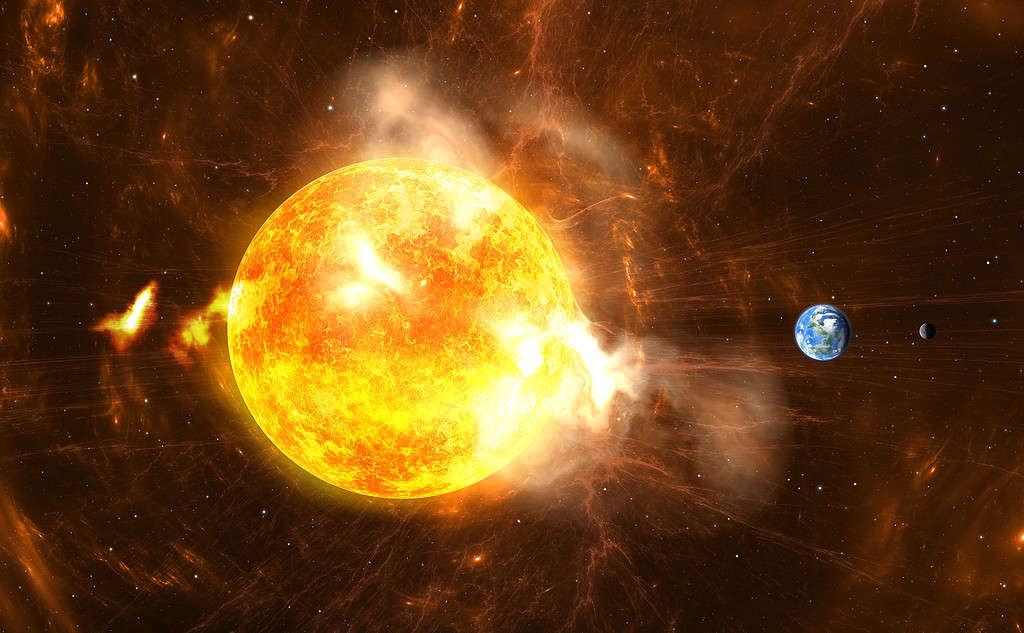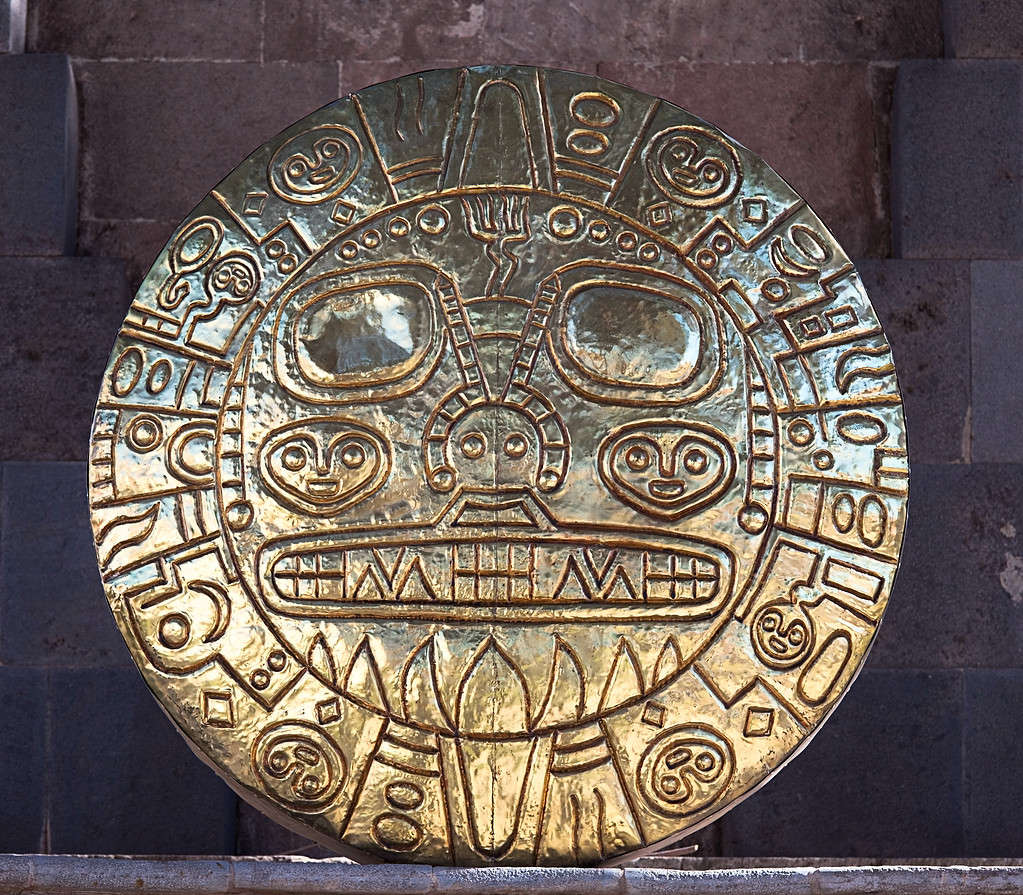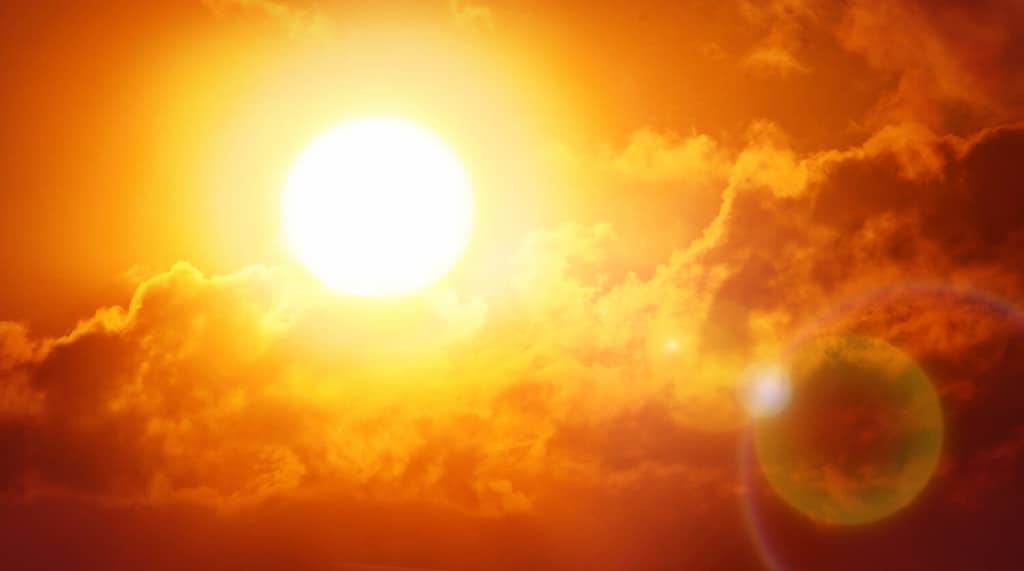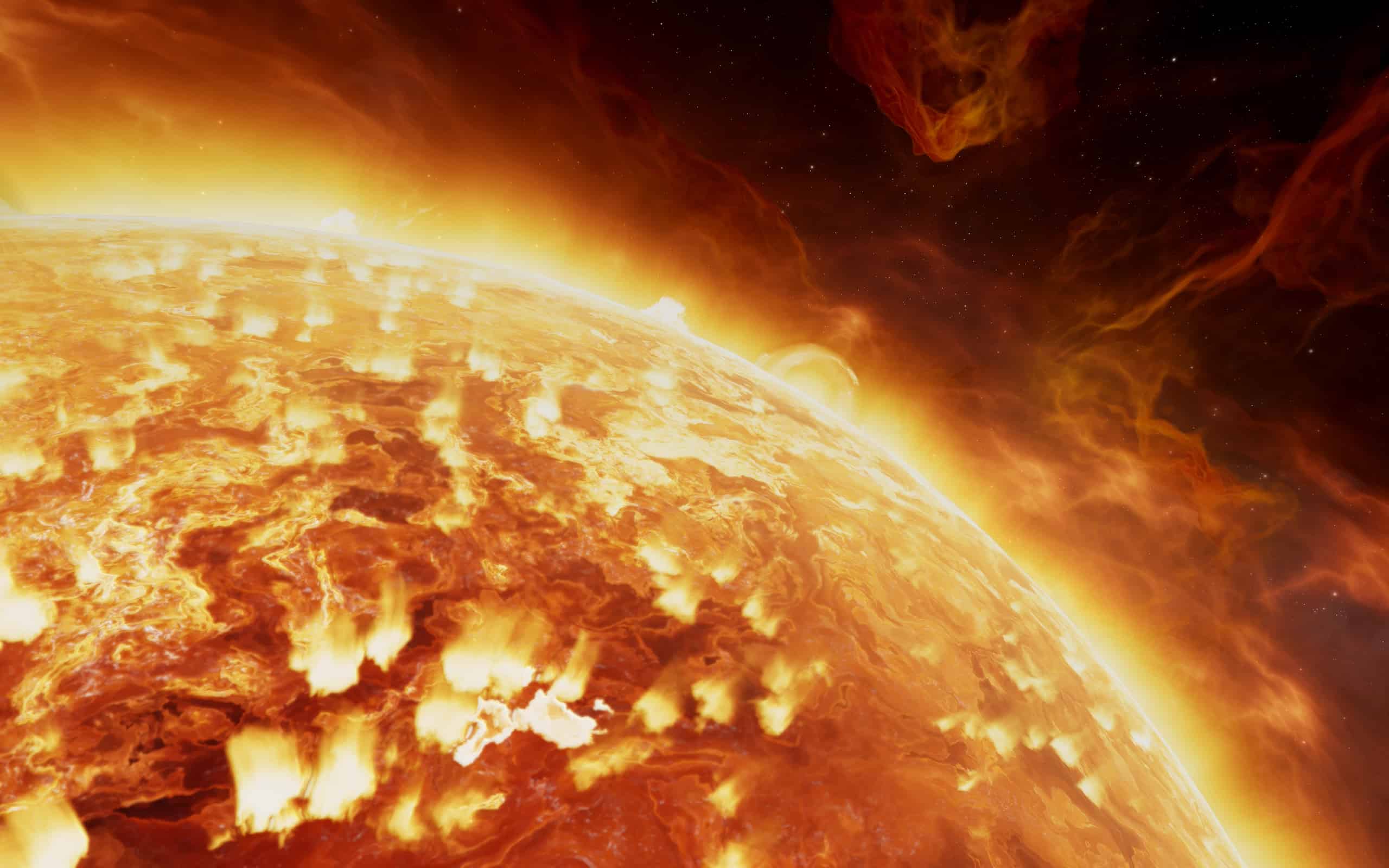The sun, that big, bright burning ball of gases and flames that heats and gives light to our planet, is actually a star. Even more mind-blowing is the fact that there are billions of suns in the galaxy, and likely plenty we do not even know about. Where did this massive ball of gases get its name, and what is the sun called in other countries?
What Is the Sun Made Of?

Giant Solar Flares. Sun produces super-storms and massive radiation bursts.
©Pitris/ via Getty Images
Helium
The sun is a 4.5 billion-year-old yellow dwarf star. The gases that make the hot ball possible are hydrogen and helium. Helium is what we fill balloons with to make them float up high on their own for oftentimes, many days after the party they were intended for. Helium or helios, which means sun, was found within the sun’s corona, the outermost section of the sun. The only time the sun’s corona can be seen is during a solar eclipse.
Hydrogen
The other gas that creates the sun, along with helium, is hydrogen. Hydrogen is also responsible for half of what makes water as we know it. It is formed by water and returns to water once oxidized. Hydrogen is a gas that exists in almost every living thing, though it isn’t functional without being paired with oxygen or carbon atoms. It is the most abundant element in the universe and is found in stars, and Jupiter is mostly made of hydrogen.
The sun is a short 93 million miles from our planet, though it seems much closer, given how hot our summers are becoming. It is the only star in our solar system and has a massive diameter of 865,000 miles! The corona of the sun reaches 3.5 million °F.
Naming the Sun

Star of our solar system 3D illustration close shot with Nebula gases erupting from the Sun’s surface. Solar hot energy flares and coronal mass ejections unleash a torrent of searing hot gases into space.
©remotevfx/ via Getty Images
The sun has many names depending on where you are in the world. In Ancient times, the sun was considered a god and was called Helios most frequently. Helios, the Sun god in ancient Greek mythology, is what many things that go hand-in-hand with the sun, such as heliosphere and helioseismology. The Latin term for the sun is sol, as in solar. Another term used when referring to the sun is sunne, an Old English term that was derived from the Proto-Germanic word sunnōn.
Helios
Helios, the Greek god, was the son of the Titaness Theia and Titan Hyperion. He was also the brother of Selene, the goddess of the Moon, and Eos, the goddess of the dawn. His entire family had something to do with the galaxy in one way or another. The handsome god had a crown of sunbeams and a chariot of fire-breathing horses. When Eos announced the new day each day, Helios would get in his chariot and deliver sunshine to the world.
Sol Invictus
Sol Invictus was the Roman (Syrian) god of the sun. There was another sun god around the same time. Sol Indiges (Roman) and Sol Invictus could have possibly been the same person. On 25 December AD 274, the Roman emperor, Aurelian, declared the Cult of Sol Invictus to be a formal cult to go along with the other Roman cults of the time. Either way, people literally worshipped the sun, and it didn’t stop with Roman gods.
Later, Emperor Aurelian, who had set to law the Cult of Sol, continued to carry out the cult’s teachings. He had at least four temples built for the Cult of Sol. He also made the cult a popular choice for the Romans and had many highly esteemed people join and promote it. Aurelian even held games in honor of the Sun God every four years. Eventually, there were coins with Sol on them. Constantine declared March 7, 321 dies solis, as the day of the Sun, “Sunday,” as the Roman day of rest.
The Entire World All Had a Name for the Sun

Inca God: Inti, Sun God, son of Viracocha – god of civilization. Cuzco, Peru
©IlonaBudzbon/ via Getty Images
Ra, the Egyptian Sun God
The Egyptian Sun God was the creator of all life and the one god in Egypt. He had the body of a man, the head of a falcon, and a cobra on top of his head. Don’t let his scary appearance make you think of him negatively or fearfully. The cobra is a sign of royalty and authority.
Huitzilopochtli, the Aztec God of the Sun
The Aztec God of the Sun is also their god of war and surprisingly comes disguised as a fierce hummingbird. This cute little diety was actually in this form because the would of dead soldiers returned as hummingbirds. Since Huitziopochtli was always in danger of being overcome by darkness, the good Aztec people helped him. They sacrificed a person in order to give the blood of their heart as a meal.
Sol, the Norse Sun Goddess
The Norse Sun God is the sister of Mani, the Norse Moon God. Sol had to drive the sun chariot as punishment because of her father’s arrogance. Sol is the god of light and solar energies, and she is doomed to drive the chariot back and forth daily while two wolves chase her. It is possible that this god was reinvented by the Norse from the Romans.
Arinna, the Hittite Goddess of the Sun
The Hittite Goddess of the Sun offered protection from war and disaster while providing warmth from the sun. Nothing bad can happen while the sun shines as long as people worship her. The Hittites, ancient Anatolians, were what we know as modern-day Turkey. People brought round discs depicting the sun to temples made in honor of Arinna.
Inti, the Incan Sun God
The Incan Sun God is a volatile god who is capable of causing an eclipse when he is not happy. He is so important that it is asked that no one speak his name aloud. Inti is represented by a large golden disc with tons of arrows. He spends his days strolling across the sky before jumping into the ocean each night, only to return again at dawn.
Lugh, the Sun God of the Celts
The Sun God of the Celts is a beloved hero among Irish folklore. He is associated with light, crafts, and of course, the sun. He is not fond of travelers at Machu Picchu and far away from the sun. Lugh has a spear that never misses its target called The Spear of Victory or the Invisible Spear. The more he uses this magical spear, the hotter it becomes. He is the only one able to hold it, and at night it is placed in water to cool down.
Surya, the Hindu Sun God
Also known as “The Shiner,” this golden-haired god has a pleasant disposition. He has a chariot with one wheel driven by Aruna, the God of Dawn, and pulled by a seven-headed horse. He has plenty of stories about who he has been and slays the demons every morning by bringing morning light.
Mithra, the Persian Sun God
The Persian Sun God isn’t just in control of the sun. He also controls friendship, war, the seasons, cosmic order, royalty, covenants, and contracts. Mithra makes sure everything works out in an orderly fashion and that the cosmos, seasons, and sun all do so together. He also played a hand in judging souls in the afterlife, banishing darkness, and protecting humanity. If a king was not treating his people fairly, Mithra would no longer support the king.
Kinich Ahau, the Mayan Sun God
The Mayan Sun God doesn’t just control the sun, he also controls disease and drought. This man with squarish crossed eyes, a very pointy incisor, and a crooked nose is one of the gods in charge of the 52-year cycle called Landa. He is in correlation with the number four. At the end of the world, he will unleash his jaguars upon humanity, and they will destroy it.
Freyr, the Norse God of Fertility, Peace, and Sunlight
The Norse God of Fertility, Peace, and Sunlight is an attractive twin of Freya who has a great sword and ship. The ship shrinks, and he keeps it in his pocket. He also controls rain and harvests.
Thần Mặt Trời, the Vietnamese Goddess of the Sun
The Vietnamese Goddess of the Sun is in charge of bringing light to the world. When her husband, who is also her sister’s husband, wants to meet with them, there is a solar eclipse.
Amaterasu, the Japanese Sun Goddess
The Japanese Sun Goddess became angry with her brother, she hid in a cave. This made the world drop into darkness with no hope in sight. Then some of the other gods hung mirrors in her cave trying to coax her out and also bring light back to the world.
Surya, the Hindu Goddess of Light
The Hindu Goddess of Light is best known for the sun salutations called Surya Namaskara, practiced in yoga.
Zun, the Zabulistan Sun God
The Zabulistan Sun God was literally the sun as we know it. It was believed in, what is known as Afganistan that the sun was the god of justice, the force of good in the world, and the reason darkness was driven out of the world, allowing people to live another day.
Bila, the Adnyamathanha Sun Goddess
The Adnyamathanha Sun Goddess is a group of Aboriginal Australian people. Bila is a solar goddess who roasts her victims, who can be an entire village of people, over the sun, which is how it gets its fire to light and heat the sky. There is a myth that speaks of the Lizard Men who set off and attacked her, causing her to run, which subsequently plunged the world into darkness, The Lizard Men then, using a boomerang, caught her and forced her slowly across the sky every day.
You are My Sunshine?
As you can see, there are plenty of deities who were specifically for the sun. Some had other duties, as well. This list is far from complete because there are many gods and goddesses of the sun, solar energy, and light. The sun, its name, and the deities behind it are all interesting topics to learn about.
FAQ

©Ed Connor/Shutterstock.com
Q: Does the sun have its own name?
A: No, it does not. Any star can be called the sun, though not all suns can be called stars.
Q: What existed before the sun?
A: Plenty of other suns, just not one this close to Earth. The sun is made up of gases and dust that began spinning in a circle called the solar nebula 4.6 billion years ago. When the solar nebula collapsed, it flattened and formed a disc. A good portion of the nebula was pulled to the center of the gases, creating the sun, along with matter from other planets, which then circled the sun.
Q: Who named the sun first?
A: No one person is responsible for naming the sun first. Many places had their own versions of what we call the sun, though there is no official name.
Thank you for reading! Have some feedback for us? Contact the AZ Animals editorial team.








